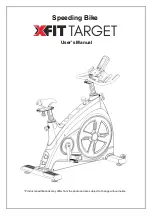
Instructions for Use
Ambulatory Abduction Dorsiflexion Mechanism (ADM)
Copyright © 2021 C-Pro Direct Ltd
Version 002 January 2021
075_MKT_Day_ADM_Instructions_for_Use_V002
Intended Use
The Ambulatory Abduction Dorsiflexion Mechanism (ADM) comprises an ADM device and
ambulatory footwear that has been made or adapted to connect to an ADM. The Ambulatory ADM
may be worn unilaterally or bilaterally by patients with a range of conditions affecting the main joints
and motions of the ankle and foot - specifically the sub-talar and tibio-talar joints. Ambulatory ADMs
are suitable for a range of conditions that result in an abnormal (typically supinated) gait. This includes
Clubfoot and some neurological and muscular conditions. Ambulatory ADMs should be used as
directed by a qualified clinician to achieve a specific purpose, such as maintenance of improved foot
position or range of motion and gait improvement.
Device Function and Purpose
Ambulatory ADMs alter the resting foot / ankle position and gait. Gait alterations typically include
reversal of a tendency to supinate (ie., for the foot to turn inwards and downwards). Expected gait
alterations include a lengthening of the stride, prevention of foot-drop, improved heel-strike and
a reduction of inward rotation at the hip and knee. Patients with neurological conditions may also
experience improved balance, endurance and confidence. Range of motion improvements may also be
achieved with prolonged consistent use.
Package Contents
An Ambulatory ADM system comprises:
q
One or two ADM devices with a side clip system for attachment to footwear
w
Footwear, typically a pair of adapted shoes. Depending on the requirement, one or both items of
footwear will be modified to incorporate an “ADM Socket” which enables attachment of an ADM
device.
e
Two ADM Removal Tools to enable removal of the ADM device from the footwear.
q
e
w
i w p






















